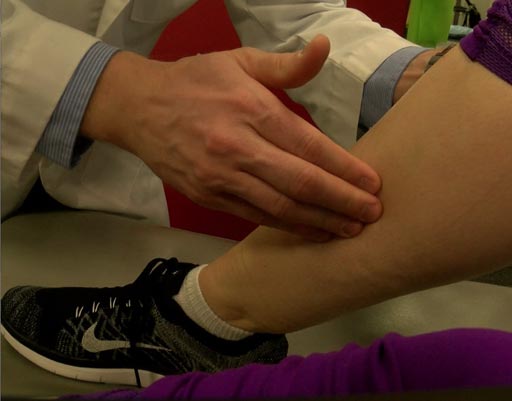Low BMI May Increase Risk of Stress Fractures
By MedImaging International staff writers
Posted on 20 Jun 2017
Researchers have shown that underweight female runners have a higher risk of injury from stress fractures and take a longer time to heal, than women with a normal Body Mass Index (BMI).Posted on 20 Jun 2017
While lower body weight may be an advantage for runners, the new research shows that a BMI of less than 19 increases the risk of women runners developing stress fractures compared to those with a BMI of 19 or higher. The recovery time after suffering such fractures also took longer in underweight women runners.

Image: Research shows underweight female runners have a higher risk of injury from stress fractures (Photo courtesy of the Ohio State University Wexner Medical Center).
The researchers from the Ohio State University Wexner Medical Center (Columbus, OH, USA) published the results of the study in the May/June 2017 issue of the journal Current Orthopaedic Practice. The researchers followed injuries of dozens of college athletes for three years. The researchers used the Kaeding-Miller classification system that ranks injuries on a scale between 1 and 5. The system takes into account the symptoms of the patient, bone scans, and imaging findings from Computed Tomography (CT), X-Ray, and Magnetic Resonance Imaging (MRI) scanners.
The researchers recommend that female athletes keep to a BMI of 20-24, close to the recommended BMI score of 26, so that they have enough lean muscle mass to dissipate impact forces while running on hard surfaces.
Assistant professor of clinical orthopedic surgery and sports medicine at Ohio State, Dr. Timothy Miller, said, "We found that over time, we were able to identify the factors that put female runners at an increased risk of developing a stress fracture. One of the most important factors we identified was low body weight, or low body mass index. When body mass index is very low and muscle mass is depleted, there is nowhere for the shock of running to be absorbed other than directly into the bones. Until some muscle mass is developed and BMI is optimized, runners remain at increased risk of developing a stress fracture. It's imperative that women know their BMI and work to maintain a healthy level. They should also include resistance training in their training regimen to strengthen the lower leg to prevent injury, even if that means adding weight from additional muscle mass."
Related Links:
Ohio State University Wexner Medical Center














